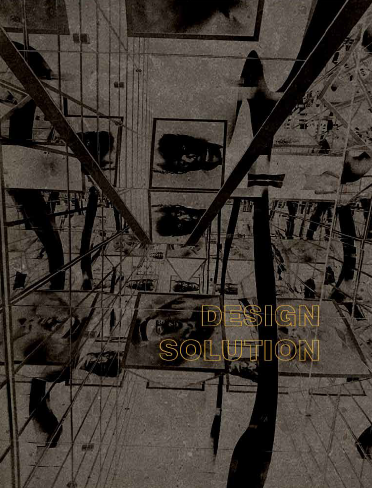[S01.6] Non-religious Spiritual space for social cohesion in Vietnam

5.5 Conclusion
The historical events at the end of the nineteenth century have caused a profound change in the social structure of Vietnamese society: the disconnection between generations in the form of collective memory.
Consequently, social cohesion is threatened by the lack of mutual understanding and ignorance about cultural values. The nature of collective memory in Vietnamese society stems from communal values. However, under the pressure of economic and social transition since the Doi Moi, it is crucial to adopt a new approach in the sphere of collectivism: the role of individuals in the social setting merits careful attention from the government as well as in the perception of society as collective memory is initially built up from the individual level. By this means, the attempt
to bridge the gap between generations has to be a bottom-up process, starting from thoughtful research into the personal perception within a social frame. The power of interior space as a social medium comes from its direct and intimate interaction with people physically and particularly emotionally. Equally importantly, the existence and significance of architecture or interior space are based on the memory that people invested in it. In this regard, a spiritual space should convey its own inner
language as a bridge to connect and encourage social interactions at both individual and collectivity level.
The key concept of my design is the circulation of collective memory. The gap between generations is an inevitable corollary of the development process. Therefore, social reconciliation is not to resolve the problem but to get a mutual understanding and respect the differentiation between generations. The past need to be constantly examined and transformed with critical thinking. In this regards, làng (village)- a cultural value presenting for the collective spirit of the Viet need to be respected and reactivated in a new existence. The whole journey emphasises the personal experience as a starting point and finally ends up with a collective experience.
In conclusion, this research proved that self-reflection is crucial to understand the position of each individual in their community and to realize that people are always social being from the deepest essence. Attacking, dismissing or simply ignoring the past will only encourage forgetting and losing identity.
Limitations and recommendations
This is a vast and complex territory as it requires a holistic and multidisciplinary approach to the individual and social level simultaneously. Furthermore, in the sphere of spirituality, it is a challenge to give an exact answer for all of these matters. Therefore, within a very limited time, there are some inevitable limitations that need to be improved:
Research
Due to the distinctions in the natural and social environment and the enormous influence of the spatial disparity during the colonial time, it is acknowledged that Vietnam is far from a hegemony society. In fact, Vietnam is divided into three zones: North, Central and South with its own characteristic. This research is just an overall view to examine and identify the most basic issues regardless of region. It is, however, important
to take a step further in an in-depth investigation into each region to establish the most practical and appropriate solution for social cohesion. Due to the lack of time and connections, the interviews were conducted mostly with the informants coming from and living in the South of Vietnam (Ho Chi Minh city in specific). Given the individual approach, for the more precise outcome, the area of the interview needs to be expanded to the North and Central with a variety of ages, careers and social position.
Design solution
A non- religious spiritual space is a new definition in Vietnam. Therefore, the very limited source of relevant references from existing projects or academic research into (in Vietnam) this subject requires more time for a deeper insight into the traditional architecture as well as the social impact of architecture on society. My proposal is currently limited to a conceptual design which should be improved more in details and technical issues such as lighting solution, specific design and function for each area, and material selection when it comes to reality. Moreover, it is also necessary to take a step deeper into the social and psychological aspects of the informal social places so that giving a more detailed solution for it.
Reference:
Bevan, R. (2006) The destruction of memory- Architecture at war., London: Reaktion Books Ltd.
Bich, L. (2014) ‘Cay da 500 tuoi o ngoai thanh Ha Noi’, [online], available: https://www.phongtuc.vn/cay-da-500-tuoi-o-ngoai-thanh-ha-noi/].
Bouquet, M. (2010) ‘Vietnamese party-state and religious pluralism since 1986: Building the fatherland?’, Journal of Social Issues in Southeast Asia, 25(1), 90.
Caan, S. (2011) Rethinking design and interiors: human beings in the built environment, London: Laurence King.
Can, B. (2017) ‘Architecture and the Social Frameworks of Memory: A Postscript to Maurice Halbwachs’ “Collective Memory”‘, Iconarp International Journal of Architecture and Planning, 5(1), 01-09.
Coles, J. and House, N. (2007) The fundamentals of Interior Architecture, United Kingdom: AVA Publishing SA.
Duiker, W. J. (1995) Vietnam : Revolution in transition, 2nd edition ed., America: Westview Press.
Earl, C. (2010) ‘Vietnam’s “Informal Public” Spaces: Belonging and Social Distance in Post-reform Ho Chí Minh City’, Journal of Vietnamese Studies, 5(1), 86-124.
Fathy, H. (1973) Architecture for the Poor: An experiment in rural Egypt, Chicago- London: The University of Chicago.
Frampton, K. (1992) Modern architecture: a critical history / by Kenneth Frampton, 3rd ed. ed., United Kingdom: Thames & Hudson.
Hickey, G. C. (1967) Village in Vietnam, 4th edition ed., New Haven and London: Yale University Press.
Juhani, P. (2005) The Eyes of the skin- Architecture and the sense, Great Britain: John Wiley & Son.
Libeskind, S. ‘Jewish Museum Berlin‘, [online], available: https://libeskind.com/work/jewish-museum-berlin/].
Lien, Q. (2011) ‘Cay da lang‘, [online], available: http://baothaibinh.com.vn/tin-tuc/19/5972/cay-da-lang].
Marr, D. G. (1984) Vietnamese tradition on trait, 1920-1945, London: University of California Press.
McCarter, R. (2016) The space within- Interior Experiences as the origin of architecture, London: Reaktion Books Ltd.
McLeod, M. W. (2001) Culture and customs of Vietnam, Westport, Conn. ; London: Greenwood Press.
Meusburger, P., Heffernan, M. and Wunder, E. (2011) Cultural Memories: The Geographical points of view, Knowledge and Space, Netherlands: Springer Netherlands.
Nesbitt (1996) Theorizing a new agenda for architecture : an anthology of architectural theory 1965-1995 / edited by Kate Nesbitt, Princeton Architectural P.
Nguyen, C. X. (2015) ‘Mot goc cua Ha Noi “thanh lich” nam 2015‘, [online], available: http://chauxuannguyen.org/2015/10/18/mot-goc-cua-ha-noi-thanh-lich-nam-2015/].
Nguyễn, V. n. H. and Kendall, L. (2003) Vietnam : journeys of body, mind, and spirit, America, London: The University of California Press.
Nisbett, R. E. (2003) The geography of thought : how Asians and Westerners think differently … and why, London: Nicholas Brealey.
Nuttgens, P. (1983) The story of architecture, Great Britain: Butler& Tanner Ltd.
Reeh, H. (2016) ‘Encountering empty architecture : Libeskind’s Jewish Museum Berlin‘, Journal of Art Historiography.
Robinson, J. W. (2006) Institution and home: Architecture as a cultural medium, The Netherlands: Techne Press.
Sabelli, H. (1998) ‘The union of opposites: from Taoism to process theory’, Systems Research and Behavioral Science, 15(5), 429-441.
Solheim, W. (1971) ‘New light on a forgotten past’, National Geographic, 139(3), 330.
teamLab (2018) ‘The way of the sea in the memory of Topography-Colours of life’, [online], available: https://www.teamlab.art/w/sea_topography/].
Templer, R. (1999) Shadows and wind: a view of modern Vietnam, New York: The Penguin Group.
Thuy, T. ‘Gia tri van hoa gieng lang‘, [online], available: http://disanlangviet.com/2109-2/].
Tran, N. T. (1996) Tim ve ban sac van hoa Viet Nam, Vietnam: Ho Chi Minh city Press.
Vinnitskaya, I. (2012) ‘Ground Zero Master plan- Studio Daniel Libeskind‘, [online], available: https://www.archdaily.com/272280/ground-zero-master-plan-studio-daniel-libeskind].
Wright, S. (2015) ‘Streets and Laneways of Ho Chi Minh city‘, [online], available: https://www.regularsteven.com/streets-and-laneways-of-ho-chi-minh-city/].
